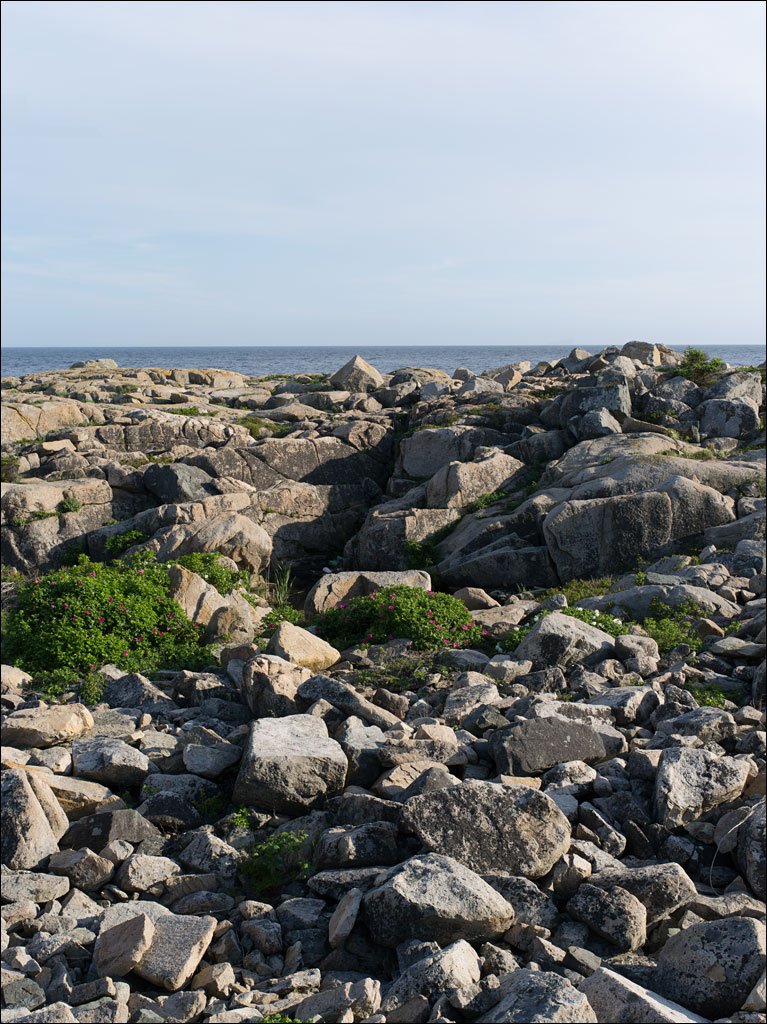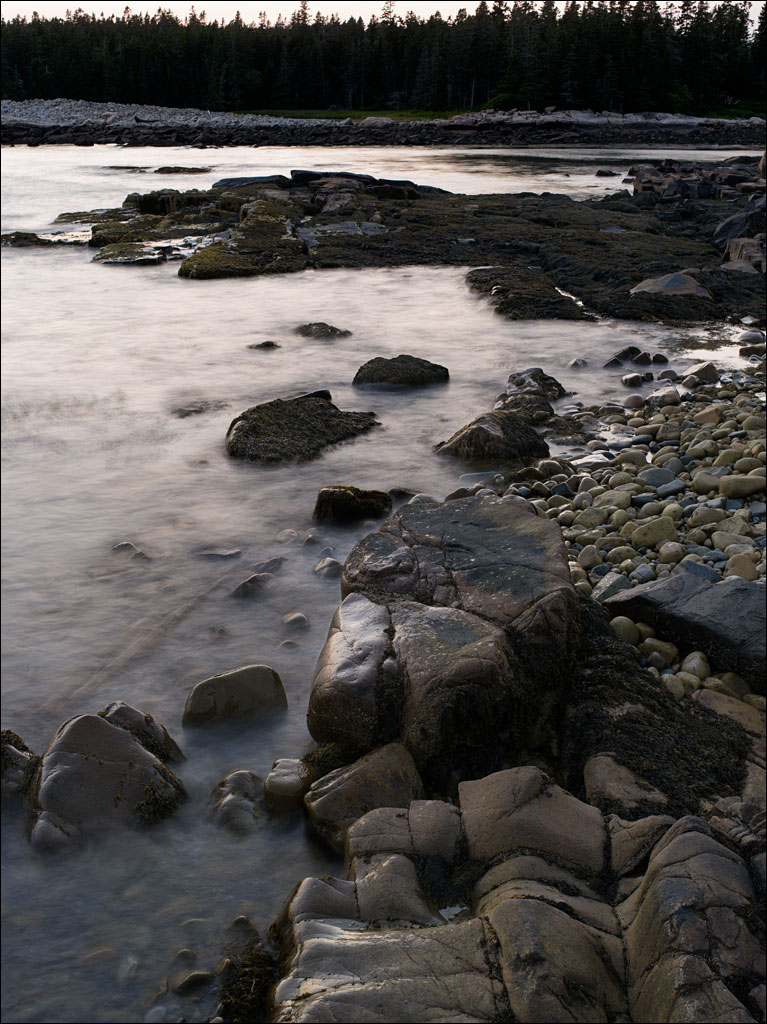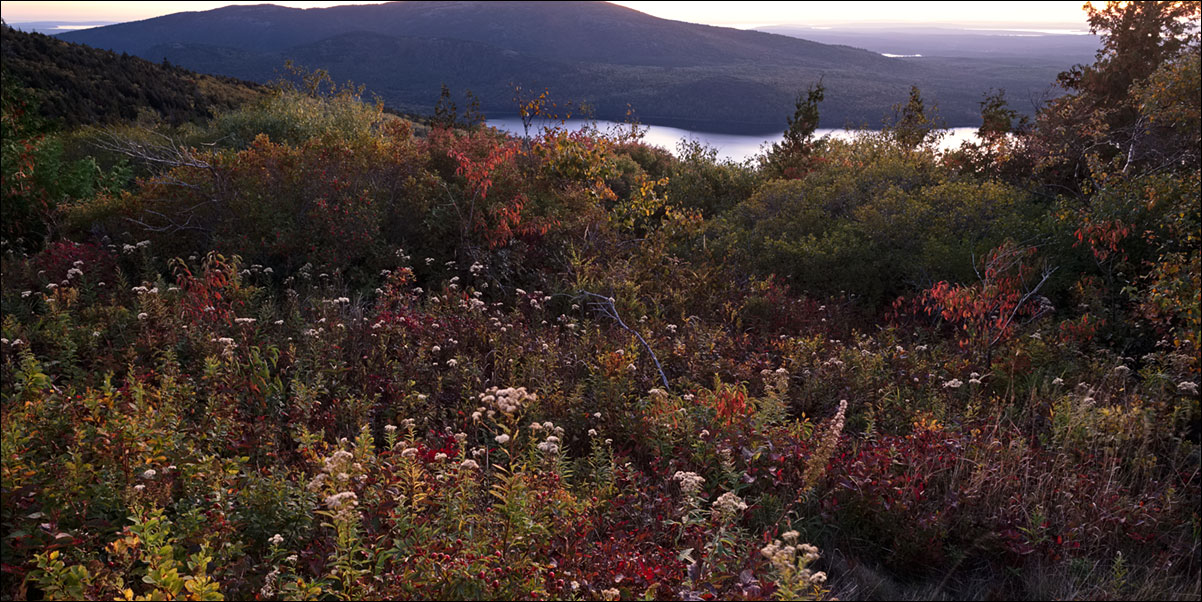 The warmth of the sunset is made more acute with the changing foliage. This meadow on Mt. Cadillac in Acadia National Park is illuminated by the fading glow of the sky. Click on the image for a larger view.
The warmth of the sunset is made more acute with the changing foliage. This meadow on Mt. Cadillac in Acadia National Park is illuminated by the fading glow of the sky. Click on the image for a larger view.
Category Archives: Acadia National Park
Columbus Day
 Columbus Day marks a major turning point in history when the culture of the “Old World” met the “New” one. The common narrative is the civilizing force of European culture built a nation from an untamed wilderness. But this invasion was brutal, as most colonization is—Europeans are not the only colonizers in history. Click on the image for a larger view.
Columbus Day marks a major turning point in history when the culture of the “Old World” met the “New” one. The common narrative is the civilizing force of European culture built a nation from an untamed wilderness. But this invasion was brutal, as most colonization is—Europeans are not the only colonizers in history. Click on the image for a larger view.
Generations
 Little Moose Island, Acadia National Park. Click on the image for a larger view.
Little Moose Island, Acadia National Park. Click on the image for a larger view.
Golden Hour
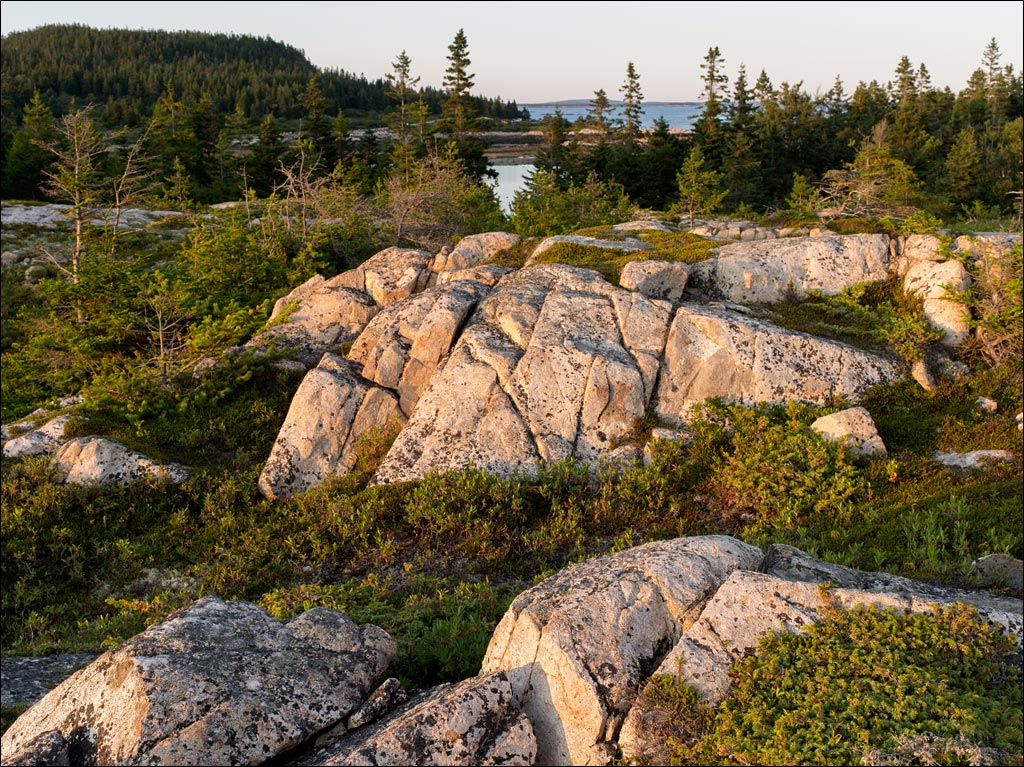 The days are getting noticeably shorter. Where the daylight would last until after nine in the evening, it is now dark by eight. The warmth of summer still remains, but the season is waning. This is near the summit of Little Moose Island looking toward Schoodic peninsular in Acadia National Park. The Anvil, a small hill, can be seen in the distance. The island can accessed at low tide. Click on the image for a larger view.
The days are getting noticeably shorter. Where the daylight would last until after nine in the evening, it is now dark by eight. The warmth of summer still remains, but the season is waning. This is near the summit of Little Moose Island looking toward Schoodic peninsular in Acadia National Park. The Anvil, a small hill, can be seen in the distance. The island can accessed at low tide. Click on the image for a larger view.
Small Cranberry
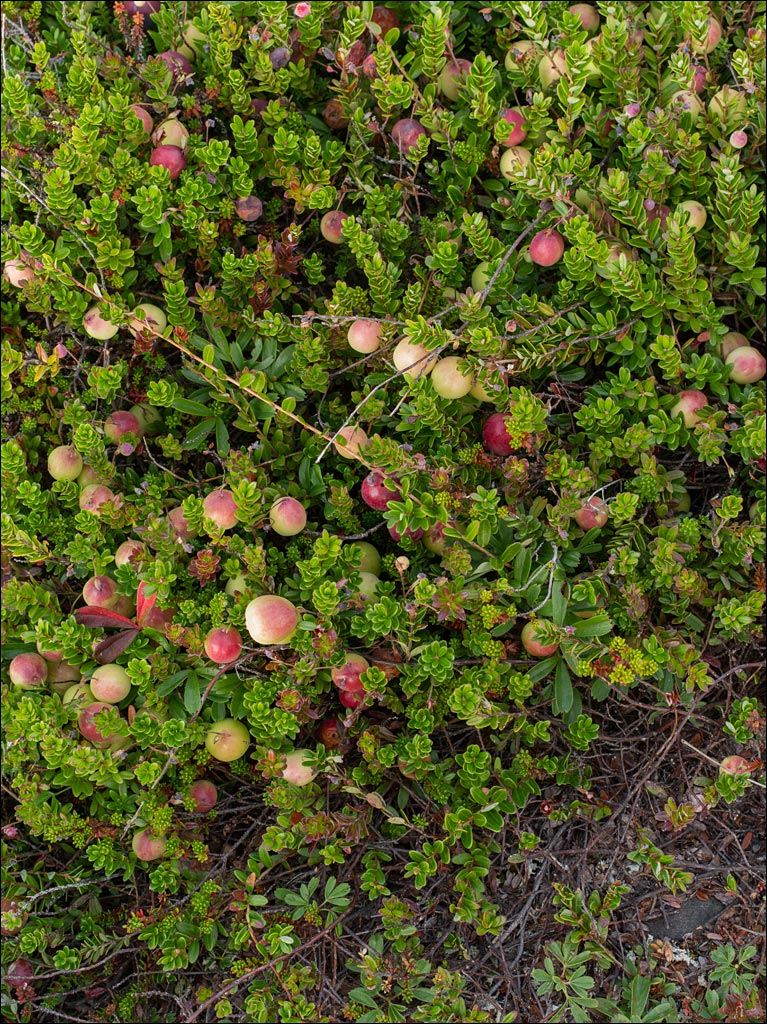 Small cranberry, Vaccinium oxycoccos, can be found in peat or acidic soils, which gives it its other common name, bog cranberry. This is one of the first plants to colonize burnt bogland and native Americans would burn bogs to stimulate its growth. Like the cultivated cranberry, these are tart. Naturally, this fruit is sought after by wildlife. This plant is on Little Moose Island at the tip of Schoodic peninsular in Acadia National Park. Click on the image for a larger view.
Small cranberry, Vaccinium oxycoccos, can be found in peat or acidic soils, which gives it its other common name, bog cranberry. This is one of the first plants to colonize burnt bogland and native Americans would burn bogs to stimulate its growth. Like the cultivated cranberry, these are tart. Naturally, this fruit is sought after by wildlife. This plant is on Little Moose Island at the tip of Schoodic peninsular in Acadia National Park. Click on the image for a larger view.
Art Meets Science
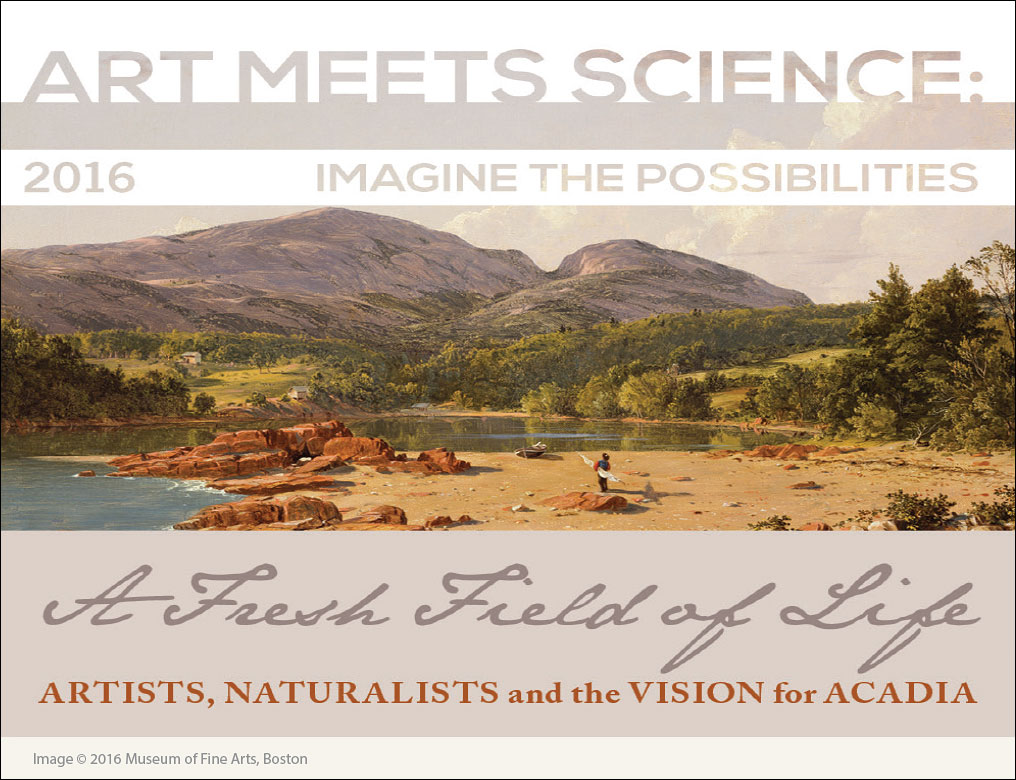 I have a photograph in the MDI Biological Laboratory’s Art Meets Science exhibition that is running from June 20th to September 30th. This is coinciding with the centenary of the founding of Acadia National Park. If you are visiting Mt. Desert Island this summer, stop by this remarkable scientific and educational facility. More on the exhibition and MDI Biological Laboratory can be found here.
I have a photograph in the MDI Biological Laboratory’s Art Meets Science exhibition that is running from June 20th to September 30th. This is coinciding with the centenary of the founding of Acadia National Park. If you are visiting Mt. Desert Island this summer, stop by this remarkable scientific and educational facility. More on the exhibition and MDI Biological Laboratory can be found here.
Forces in Nature
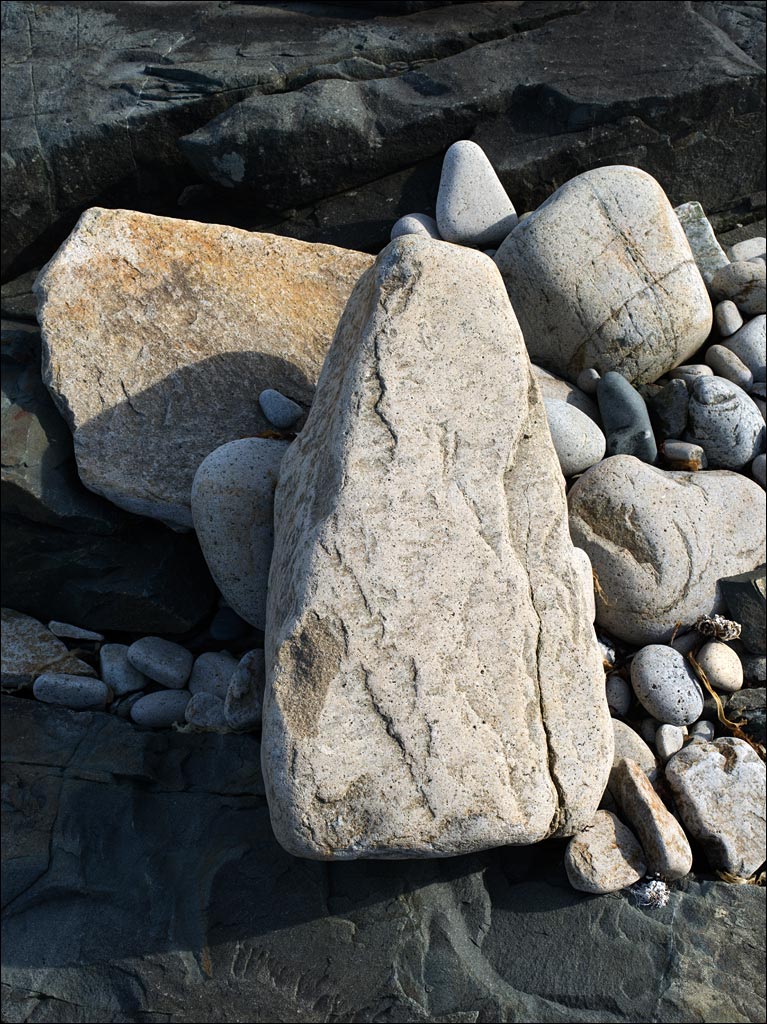 Along the rocky coast on Maine, you see cobbles, large weathered stones. These granite cobbles are on a basalt dyke on Little Moose Island. They have obviously been rounded by erosion. And they are big—I doubt I could lift the larger rocks in this image. The amazing thing is that these cobbles did not fall onto this spot—there is no place from which to fall—but rather these were cast out of the sea by the force of the tides, currents, and storm swells. If you are thinking these are near the waterline, you would be mistaken. This ledge is about 5 m or 15 ft. above the water, not far below where this picture was taken. Click on the image for a larger view.
Along the rocky coast on Maine, you see cobbles, large weathered stones. These granite cobbles are on a basalt dyke on Little Moose Island. They have obviously been rounded by erosion. And they are big—I doubt I could lift the larger rocks in this image. The amazing thing is that these cobbles did not fall onto this spot—there is no place from which to fall—but rather these were cast out of the sea by the force of the tides, currents, and storm swells. If you are thinking these are near the waterline, you would be mistaken. This ledge is about 5 m or 15 ft. above the water, not far below where this picture was taken. Click on the image for a larger view.
The Gods Roll Dice
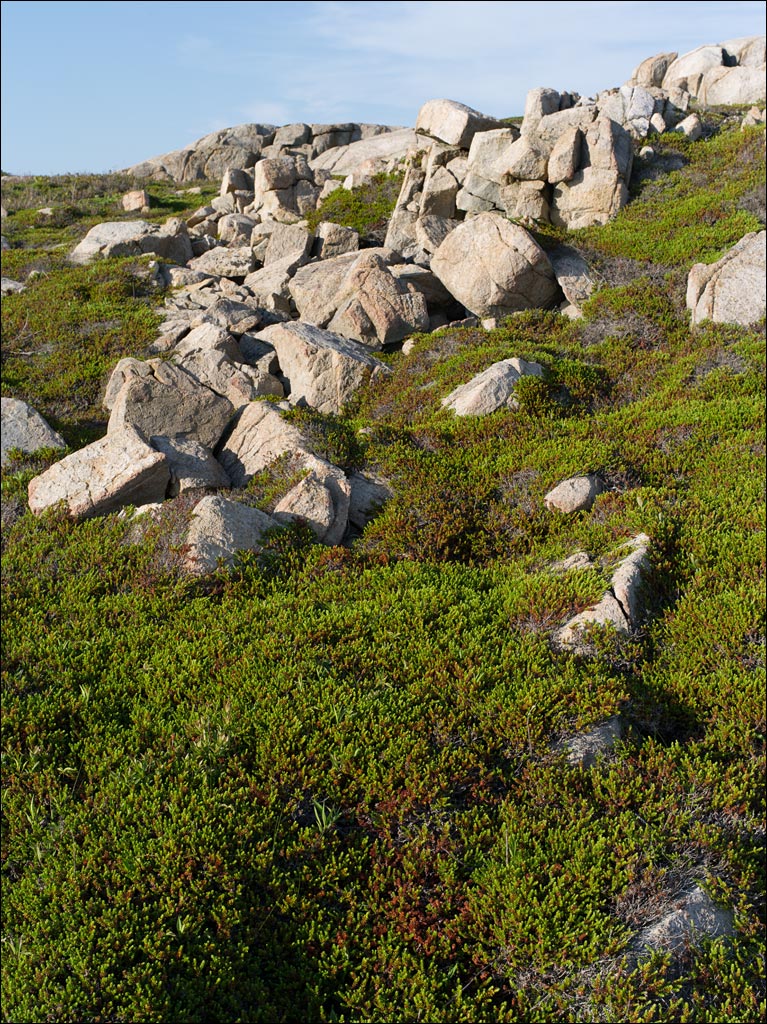 Chance, luck, fortune—the building blocks of life. The gods cast the stones and the players fill the gaps. Chaos was the first Greek God. From Chaos, meaning gap or chasm, came Gaia, the Earth. Chaos and beauty seem to be eternally linked. Click on this image of Little Moose Island in Acadia National Park to see a larger version.
Chance, luck, fortune—the building blocks of life. The gods cast the stones and the players fill the gaps. Chaos was the first Greek God. From Chaos, meaning gap or chasm, came Gaia, the Earth. Chaos and beauty seem to be eternally linked. Click on this image of Little Moose Island in Acadia National Park to see a larger version.

